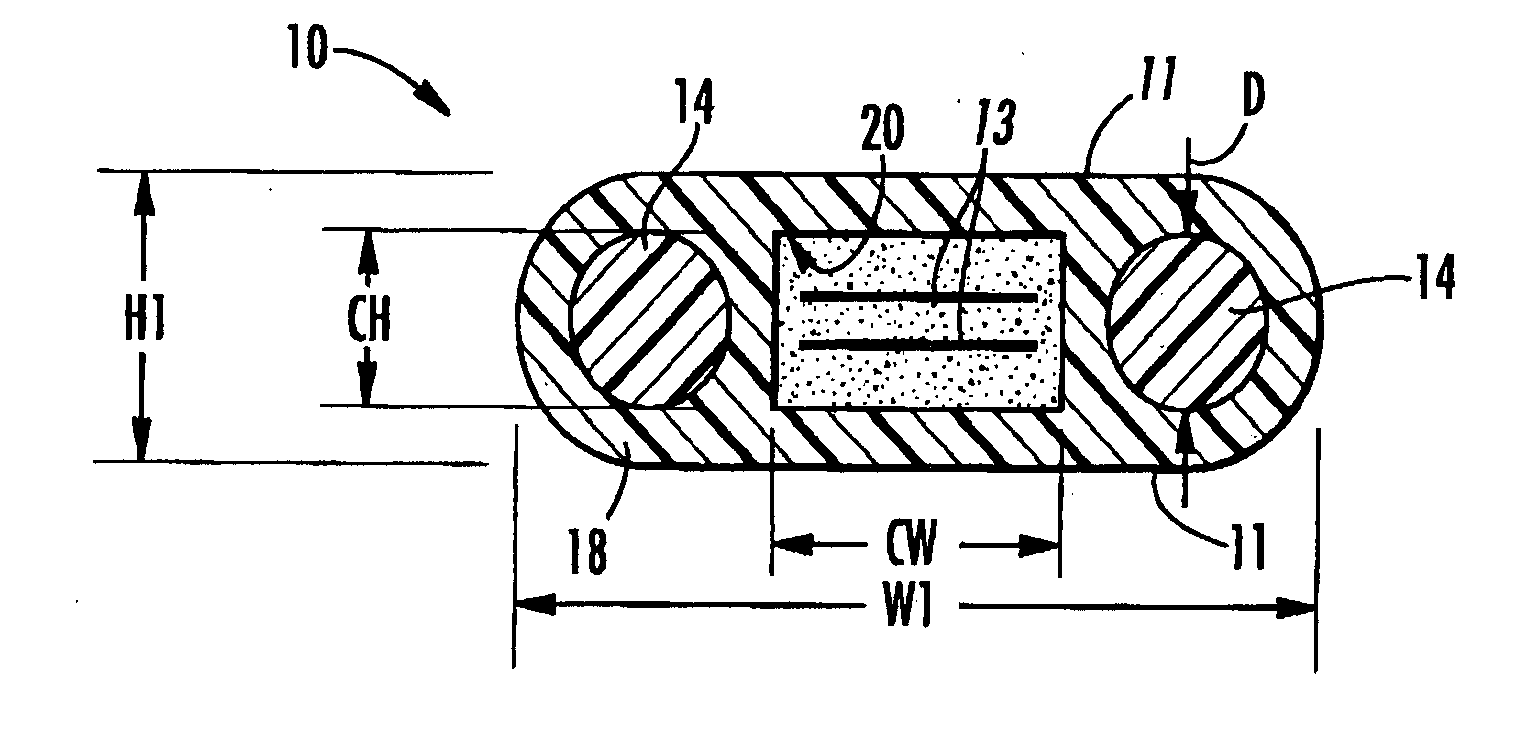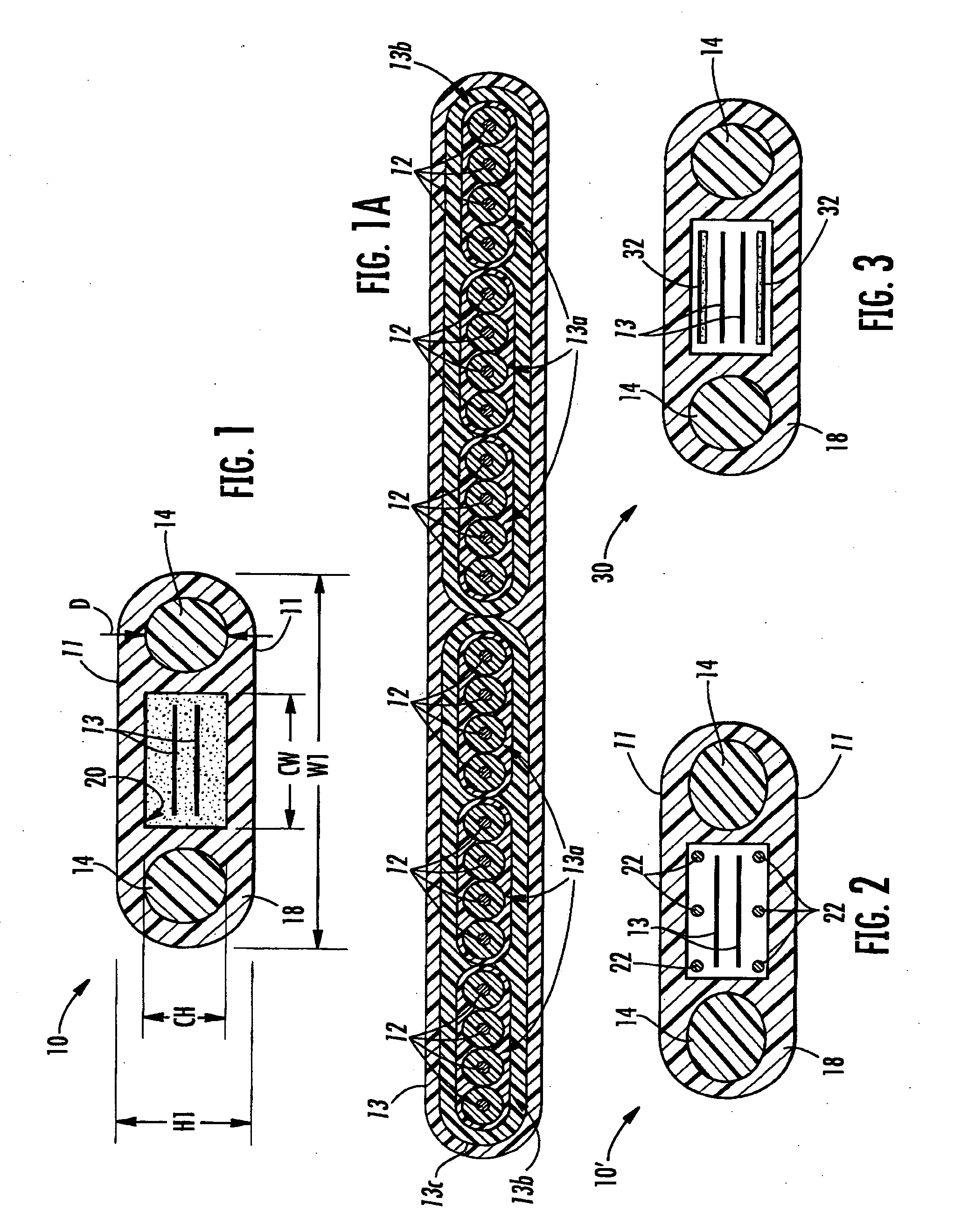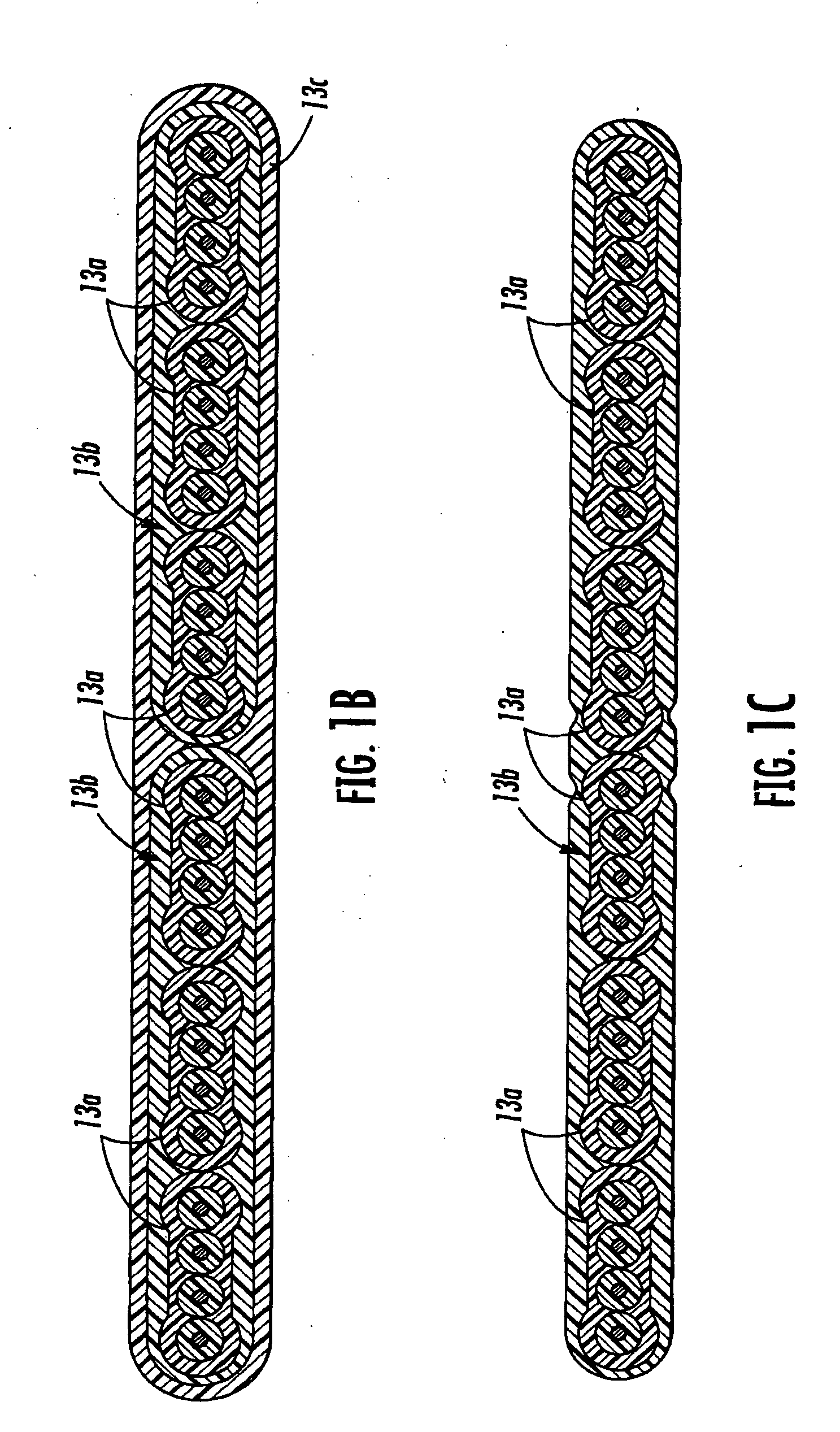Fiber optic cables and assemblies for fiber to the subscriber applications
a technology of fiber optic cables and fiber optic cables, applied in the direction of optics, fibre mechanical structures, instruments, etc., can solve the problems of limited bandwidth, copper cables have drawbacks, and transmit a relatively small amount of data with a reasonable cable diameter, so as to inhibit damage to at least one optical fiber, the effect of quick and easy access
- Summary
- Abstract
- Description
- Claims
- Application Information
AI Technical Summary
Benefits of technology
Problems solved by technology
Method used
Image
Examples
Embodiment Construction
[0024] Reference will now be made in detail to exemplary embodiments of the invention, examples of which are described herein and shown in the accompanying drawings. Whenever practical, the same reference numerals are used throughout the drawings to refer to the same or similar parts or features.
[0025]FIG. 1 depicts an exemplary fiber optic cable 10 (hereinafter cable 10) according to the present invention that can be configured for use as a drop cable, a distribution cable, or other suitable portions of an optical network. Generally speaking, a distribution cable will have a relatively high optical fiber count such twelve or more optical fibers for further distribution to the optical network. On the other hand, a drop cable will have a relatively low optical count such as up to four optical fibers for routing towards a subscriber or a business, but drop cables may include higher fiber counts. Cable 10 generally includes at least one optical fiber 12 disposed as a portion of an opt...
PUM
 Login to View More
Login to View More Abstract
Description
Claims
Application Information
 Login to View More
Login to View More - R&D
- Intellectual Property
- Life Sciences
- Materials
- Tech Scout
- Unparalleled Data Quality
- Higher Quality Content
- 60% Fewer Hallucinations
Browse by: Latest US Patents, China's latest patents, Technical Efficacy Thesaurus, Application Domain, Technology Topic, Popular Technical Reports.
© 2025 PatSnap. All rights reserved.Legal|Privacy policy|Modern Slavery Act Transparency Statement|Sitemap|About US| Contact US: help@patsnap.com



